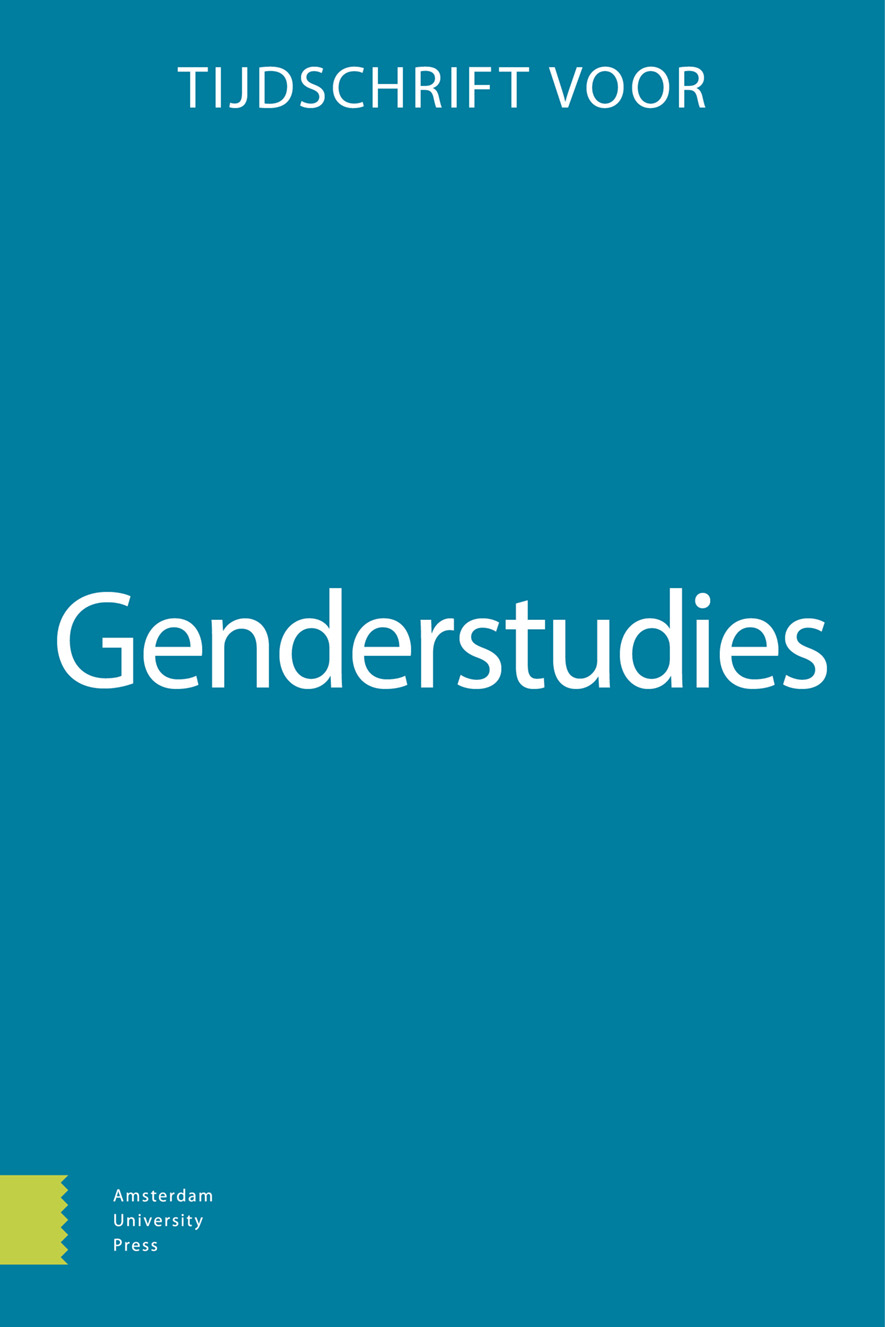- Home
- A-Z Publicaties
- Tijdschrift voor Genderstudies
- Previous Issues
- Volume 22, Issue 1, 2019
Tijdschrift voor Genderstudies - Volume 22, Issue 1, 2019
Volume 22, Issue 1, 2019
-
-
‘Mothering the artist’
Meer MinderAuteurs: Francisca Mullens & Patrizia ZanoniAbstractDrawing on Joan Acker’s notion of the ideal worker (1990) and Karen Ashcraft’s notion of the ‘glass slipper’ (2013), this paper investigates the organising practices that gender the occupation of artist manager and the music industry, and how women artist managers construct an identity in an occupation that is tailored on a male ideal manager, made to fit a man’s shoe. Empirically, we draw on thirteen semi-structured interviews with nine women artist managers, two women former artist managers, and two women former students of Music Management. In line with existing literature, our findings show that the Flemish music industry is organised around practices that reflect hegemonic masculinity, and that women managers mimic many of these practices to fit the ideal manager, and, although they see the gender inequality, they do not challenge it. At the same time, they construct an occupational identity by reframing stereotypical feminine competences as indispensable for being a good manager. By making a business case for these competences, they, however, paradoxically also reproduce those same notions of gender that they aim to overcome.
-
-
-
Music creators and gender inequality in the Dutch music sector
Meer MinderAuteurs: Pauwke Berkers, Eefje Smeulders & Michaël BerghmanAbstractThis article addresses how the position of women music creators differs from men. We clarify the general differences as well as financial gender inequality. Therefore, we draw on two sources. First, Buma/Stemra – a copyrights collecting society – provided a member database, including approximately 28,000 members. Second, as this database contains few variables besides sex and royalty revenues, we did an online survey amongst Buma/Stemra members. This survey included questions about background characteristics, income, work activities and satisfaction, their own work (in relation to gender), and their view on the gendered nature of the music industry.
First, women music creators differ from their male colleagues: they are less satisfied with their work activities and conditions, often feel not taken seriously as music creators, and are less comfortable promoting their work. Moreover, men and women differ in terms of time spent on different tasks. Finally, where women see the music industry as geared towards men, male music creators often do not see the music sector as a man’s world. They, therefore, explain gender inequality differently. Second, our analyses show that female sex/gender has a negative effect on both copyright revenues and income, even when controlled for age, years of membership, (music) education, and task activities.
-
-
-
‘Are you at the correct concert?’
Meer MinderDoor Julian SchaapAbstractIn this article, I combine insights from cognitive and cultural sociology to assess how gender and ethno-racial inequality is maintained through processes of everyday association grounded in shared mental schemes. Rock music – a form of cultural production and reception dominated by white men – is an interesting case study to dissect this process because its connotations of symbolic whiteness and masculinity have remained relatively invisible or ‘unmarked’. Based on 27 interviews with rock scene participants in the Netherlands and the United States, I examine how actors invested in rock music culture become cognitively socialised in optical communities in which shared mental schemes provide frameworks to assess scene participants’ legitimate membership. In this process, some aspects are given more mental weight than others, resulting in the maintenance of inequality. The analysis demonstrates that women and/or people of colour entering the scene are delegitimised based on an assortment of marked attributes, which are given varying amounts of mental weight. Generally, gender is attended to more often and quicker than race-ethnicity, but it is race-ethnicity that is given more mental weight in the legitimation of a participant’s presence.
-
-
-
‘Bivouacking in the borderlands’
Meer MinderDoor Marion WasserbauerAbstractMusic and identity are the focus of the oral histories of three gender nonconforming trans* persons this contribution discusses. Their life stories provide an insight into the narrators’ social, political, and emotional experience of being trans*, as well as into the various roles music may play in trans* lives. As such, this empirical paper is a contribution to research on trans* realities in Flanders, Belgium, and to the tradition of researching trans* narratives within transgender studies (see e.g. Prosser, 1998). I argue that music acts as an excellent intermediary in talking about experiencing and navigating LGBTQ identities: as a temporal and cultural medium surrounding us constantly, music is able to evoke memories and feelings adhering to specific times in our lives. Talking about music helps to structure memories, and it enables telling about oneself in an indirect, metaphorical way, which for many is easier than speaking about intricate identities directly. Two research questions guide this article: How do the narrators talk about gender through music? And how does music reflect their (gender) identity?
-
Most Read This Month

Most Cited Most Cited RSS feed
-
-
Emancipation on thin ice
Auteurs: Michiel De Proost & Gily Coene
-
-
-
Editorial
Auteurs: Sara de Jong, Rosalba Icaza, Rolando Vázquez & Sophie Withaeckx
-
- More Less

